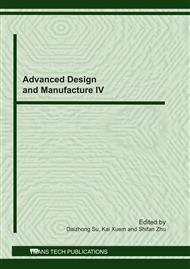p.119
p.123
p.127
p.131
p.135
p.139
p.143
p.147
p.151
Determination of Heavy Metals in Fruits of Capsicum Annuum L. by Inductively Coupled Plasma Mass Spectrometry
Abstract:
Capsicum annuum L. belonging to the family Solanaceae is a popular spice in Thailand. The mature fruits (long red pepper) are composed of carotenoid, capsaicinoid and ascorbic acid exhibiting physiological and pharmacological properties. Because of environmental pollution, these fruits might be contaminated with toxic heavy metals. Therefore, the objective of this study was to determine the concentrations of eleven heavy metals in long red pepper using nitric acid digestion followed by ICP-MS analysis. Thirteen samples of fresh fruits were collected from nine provinces located in the west of Thailand. The concentrations of toxic heavy metals including arsenic (As), cadmium (Cd), mercury (Hg), and lead (Pb) in all samples were lower than the permissible limits (4, 0.3, 0.02, and 10 mg/kg, respectively) while the concentrations of essential elements including copper (Cu) and zinc (Zn) were less than the permissible limits (20 and 100 mg/kg, respectively). The highest concentrations of aluminium (Al), chromium (Cr), iron (Fe), manganese (Mn), and nickel (Ni) found were 36.813, 0.345, 44.464, 32.172, and 1.623 mg/kg, respectively. The method adopted in this study could be valuable in quality control of edible spices for Thai people.
Info:
Periodical:
Pages:
135-138
Citation:
Online since:
July 2011
Keywords:
Price:
Сopyright:
© 2011 Trans Tech Publications Ltd. All Rights Reserved
Share:
Citation:


